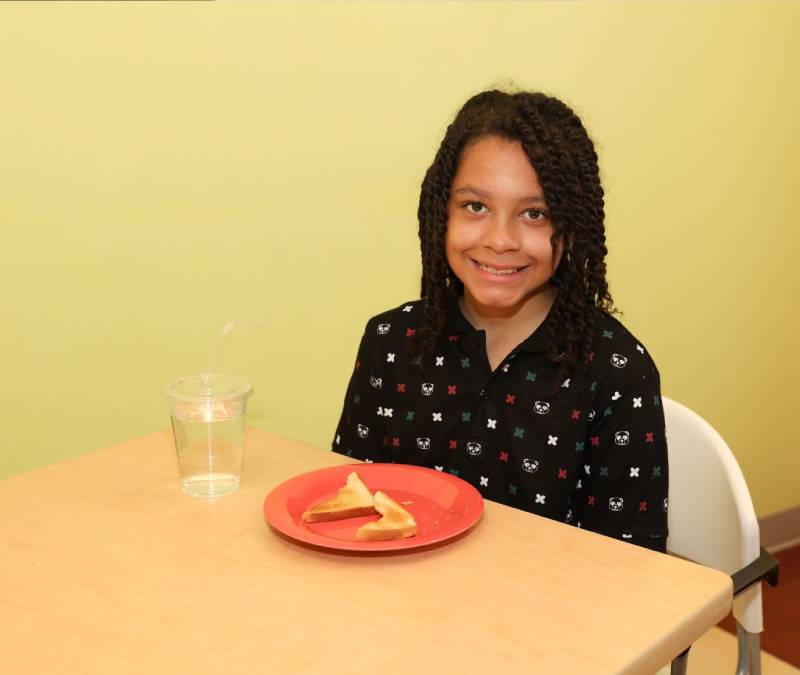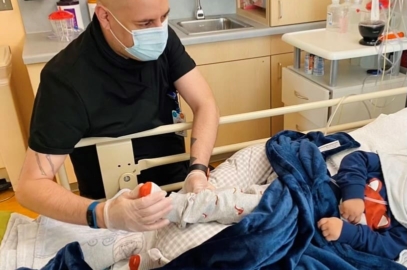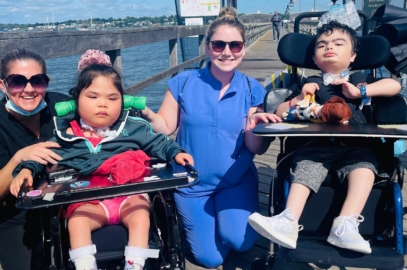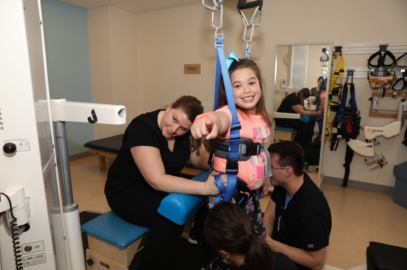May 24, 2019
Speech Therapy
Speech therapy can be a life-changing experience for St. Mary’s Kids. For both verbal and non-verbal children with special needs and complex medical conditions, speech therapy can increase independence and build important skills. May is National Speech Therapy Month, a time when we celebrate the contributions that speech therapy can make in children’s lives.
Celebrating a Center of Excellence
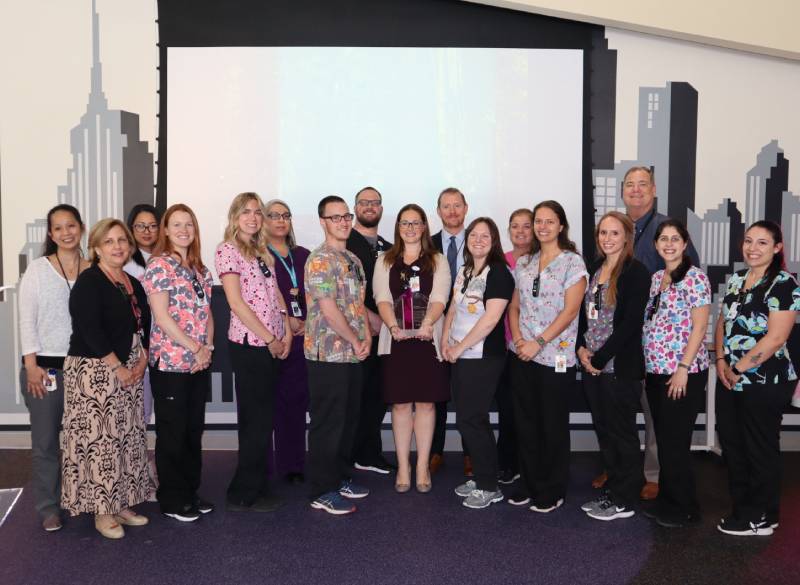
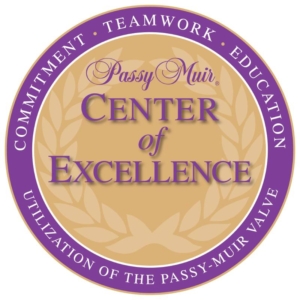
Here at St. Mary’s Hospital for Children, we have plenty to celebrate this Speech Therapy Month. Passy-Muir has recognized St. Mary’s as a Center of Excellence. Passy-Muir produces swallowing and speaking valves that can help children speak, swallow and improve their senses of smell and taste. The Center of Excellence designation is given only to facilities that meet certain guidelines for advanced treatment of children with complex conditions.
In order to be designated as a Center of Excellence, a hospital like St. Mary’s must have a dedicated multidisciplinary team supporting children with tracheostomies, including speech-language pathologists. It also must provide significant educational opportunities for its staff, allowing them to learn more about how they can best support kids using a valve to improve their speaking, swallowing and other senses. In addition, experts from Passy-Muir visited St. Mary’s to observe our health care professionals’ work. In addition, peer-reviewed publications, improved outcomes for patients and professional recognition by other experts are also critical to earning the Center of Excellence award.
Exciting Speech Therapy Developments
This is only the latest exciting development for the speech therapy program for St. Mary’s Kids. Our program provides support and therapies for children and adolescents with a wide range of feeding, speech and language disorders. When children with special needs and their families in New York come to St. Mary’s, they can work with speech therapists in small group activities as well as receiving one-on-one therapies and supports.
Our language pathologists use a range of interactions to help children, including:
- Augmentative Assistive Communication (AAC) Devices
- Supportive pictures and books
- Group events that stimulate language development
- Language intervention therapies
There are numerous speech, language and feeding disorders that can affect St. Mary’s Kids, including:
- Articulation disorders, which include difficulty producing sounds or saying words
- Fluency disorders, including problems like stuttering, involuntary repetitions or prolonged sounds
- Voice disorders, including problems with pitch and volume
- Receptive disorders that make it difficult to understand the language
- Expressive disorders that make it difficult to put words together or use language with peers
Speech-language pathologists can help children to moderate these disorders and improve their optimal potential.
Who Can Benefit from Speech Therapy?
A wide range of children can benefit from speech therapy, including kids with medical conditions affecting throat and larynx, neurological damage, hearing impairments, weak muscles, respiratory conditions, developmental delays, autism, and other special needs. Because each child has his or her unique medical background and needs, the interdisciplinary team at St. Mary’s can create an individual plan that includes speech therapy in a comprehensive treatment program.
Speech therapy doesn’t only provide benefits for verbal kids at St. Mary’s. Our speech therapists use innovative techniques with non-verbal children to help encourage their expression and support their development, including printed symbols and computerized speech generating devices. Augmentative and alternative communication technologies can help kids to develop non-verbal forms of expression that allow them to share their feelings and thoughts with families, peers, and other loved ones.
One of our most popular programs at St. Mary’s that supports kids with speech disorders is Toddler Storytime. This group program not only allows children to enjoy a fun storytime environment but also to participate in developing their own speech activity with dedicated professional support.
Therapies for Kids With Feeding Disorders
St Mary’s Hospital for Children offers services to children with complex medical needs who have difficulties with swallowing or eating. Around one-quarter of all children have some type of feeding disorder, a number that increases for children with special needs. Eating difficulties can include dependence on tube feeding, food refusal, food limitations, and nutritional deficiencies.
The Center for Pediatric Feeding Disorders at St. Mary’s is part of our program that focuses specifically on helping kids to eat and swallow. Feeding therapy includes a range of exercises that help to strengthe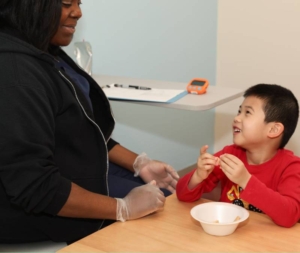 n oral muscles, including the use of a variety of treatment protocols and techniques to promote age-appropriate feeding skills and diet.
n oral muscles, including the use of a variety of treatment protocols and techniques to promote age-appropriate feeding skills and diet.
When kids present with difficulties with swallowing, our C-Arm medical imaging device, purchased with a grant from the New York City Council, allows trained staff to assess and record video X-rays of patient’s swallow function while they swallow various types of food and liquid. These innovative images allow our staff to determine treatment choices based on the unique knowledge of each child’s challenges, moving forward far more quickly and efficiently with an individualized and personalized program.
St. Mary’s Kids who are experiencing ongoing weight loss, vomiting, tantrums during mealtimes, inability to progress in texture, sensory challenges or oral motor delays can visit the Center for Pediatric Feeding Disorders for an evaluation by our trained interdisciplinary team. They can carry out an assessment and recommend potential treatment strategies for kids and families with feeding problems. The Center for Pediatric Feeding Disorders can provide therapy in a variety of ways
including an intensive day patient program, outpatient services, and a new telehealth
program to allow for improved carryover in the home utilizing video conferencing
technology.
